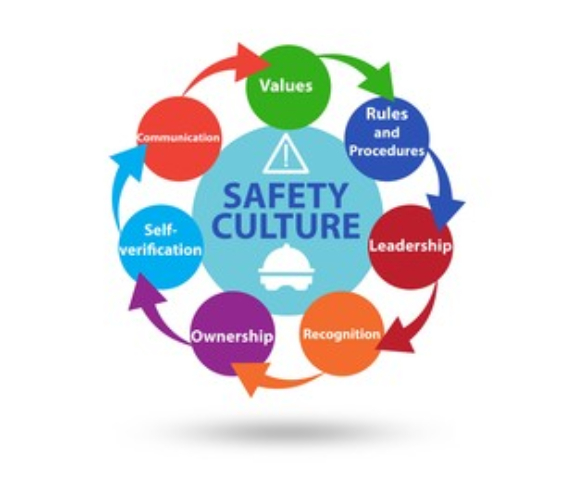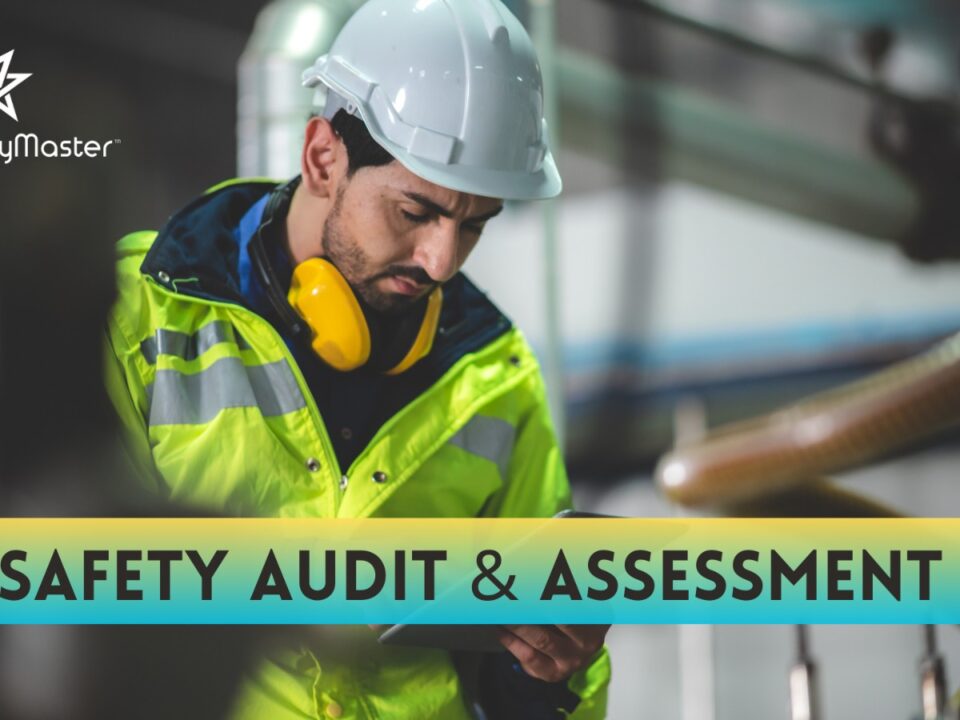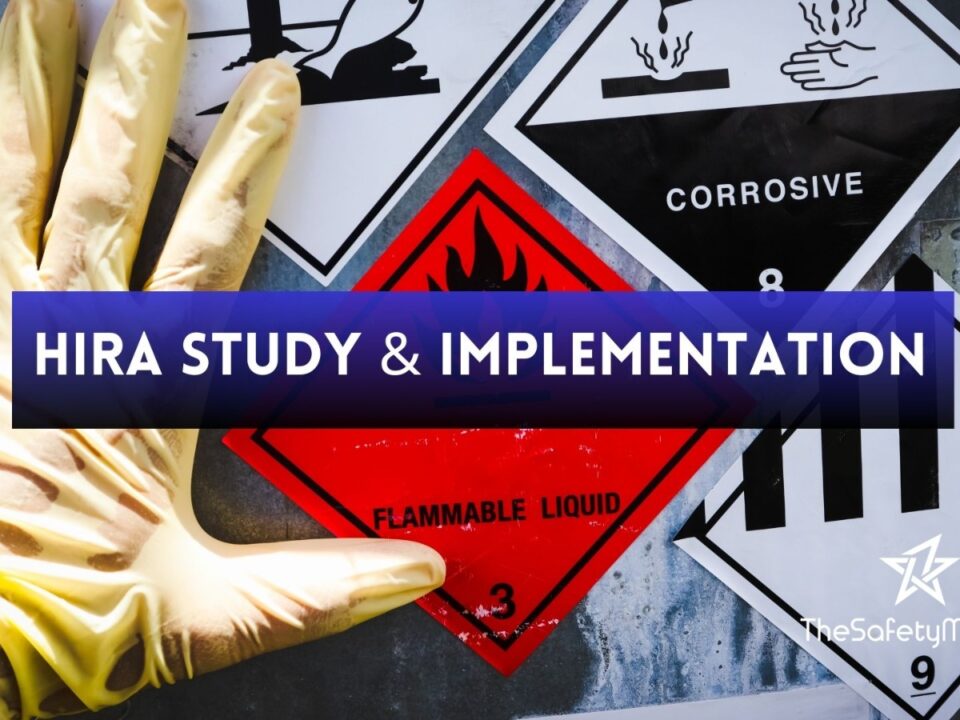Employee Safety Training at Various Levels Changing Safety Culture and Mindsets

Process Safety Audit
September 11, 2023
Safety Software “TSM-Digitech” by TheSafetyMaster
September 12, 2023Employee safety should be a top priority for every organization. Ensuring the well-being of employees not only protects them from harm but also contributes to a positive work environment and increased productivity. However, changing safety culture and mindsets within an organization can be a challenging endeavor. In this article, we will explore the importance of employee safety training at various levels and how it can play a pivotal role in transforming safety culture and mindsets.
Throughout this article, we will delve into the current state of safety culture and mindsets, discuss strategies to overcome resistance to change, highlight the significance of creating a safety-first mindset, and explore tailored training approaches for different job levels. By the end of this article, you will gain valuable insights into how organizations can foster a culture that prioritizes employee safety at every level, empowering individuals to actively contribute to their own well-being while positively impacting their work environment as a whole.
Understanding the Importance of Employee Safety Training
Employee safety training is an integral part of any organization’s commitment to creating a safe and secure work environment. It serves as a foundation for establishing a strong safety culture and instilling the right mindset among employees. Safety training not only equips individuals with the necessary knowledge and skills to identify potential hazards but also empowers them to proactively mitigate risks.
In today’s fast-paced and evolving workplace, where accidents can have severe consequences, investing in comprehensive safety training is crucial. By ensuring that every employee understands the importance of safety and receives proper training, organizations demonstrate their commitment to prioritizing their employees’ well-being. This approach not only safeguards lives but also has positive ripple effects on productivity, job satisfaction, and overall organizational success.
The Current State of Safety Culture and Mindsets
In today’s fast-paced and ever-evolving work environment, the importance of prioritizing employee safety has become more crucial than ever before. However, despite advancements in technology and regulations, many organizations still struggle to establish a strong safety culture and shift employee mindsets towards making safety a top priority.
One of the major challenges is that some employees perceive safety as an inconvenience or a hindrance to productivity. This mindset not only puts individuals at risk but also undermines the overall safety culture within the organization. Moreover, complacency can often take hold when employees become accustomed to routines and overlook potential hazards.
To address these issues effectively, organizations need to take a proactive approach by fostering a positive safety culture that encourages open communication, active participation, and continuous improvement. By instilling a sense of ownership among employees regarding their own safety as well as the well-being of their colleagues, organizations can create an environment where everyone feels empowered to take responsibility for maintaining safe working conditions.
Breaking Down Barriers: Overcoming Resistance to Change
Change can be daunting, especially when it comes to shifting deeply ingrained mindsets and entrenched safety cultures within organizations. Breaking down barriers and overcoming resistance to change is crucial for the successful implementation of employee safety training at various levels. It requires a delicate balance of empathy, communication, and a clear understanding of the underlying reasons behind resistance.
One key approach to breaking down barriers is fostering open dialogue and active listening. By creating an environment where employees feel heard and their concerns are acknowledged, organizations can gain valuable insights into the root causes of resistance. This allows them to address fears or misconceptions head-on, providing reassurance and dispelling any doubts about the need for change.
Shifting Perspectives: Creating a Safety-First Mindset
Creating a safety-first mindset within an organization requires a notable shift in perspectives and attitudes toward workplace safety. It involves instilling the belief that safety is not just a compliance requirement, but an integral part of everyday operations that protects employees and enhances overall productivity. To achieve this transformation, organizations must emphasize the importance of personal responsibility and actively involve all employees in the process.
One approach to shifting perspectives is by fostering open communication channels where employees feel comfortable reporting potential safety hazards or near misses without fear of reprisal. This creates an environment where safety concerns are addressed promptly, fostering trust and reinforcing the notion that everyone’s well-being matters. Additionally, establishing safety committees or task forces comprising representatives from different departments can encourage collaboration and generate innovative ideas to enhance workplace safety measures.
Tailoring Safety Training to Different Job Levels
When it comes to employee safety training, a one-size-fits-all approach simply won’t cut it. Recognizing the unique challenges and responsibilities that employees face at different job levels is crucial in developing effective training programs. By tailoring safety training to specific job roles, organizations can create a comprehensive and targeted learning experience that ensures every employee understands their role in maintaining a safe working environment.
For entry-level employees, foundational safety training is essential. This training should provide a comprehensive overview of safety protocols, hazard identification, and basic emergency response procedures. By instilling core safety principles from the beginning, organizations can shape young professionals into safety-conscious individuals who prioritize their well-being and that of their colleagues.
Training Strategies for Entry-Level Employees
When it comes to training entry-level employees in safety, a comprehensive approach is essential. These individuals are often new to the workforce and may have limited knowledge of workplace hazards and best practices. Therefore, providing them with the necessary skills and knowledge to navigate potential risks should be a top priority.
One effective strategy is to begin with a general safety orientation program that covers the fundamentals of workplace safety, including hazard recognition, emergency procedures, and proper use of personal protective equipment (PPE). This program should be interactive and engaging, utilizing simulations, real-life case studies, and hands-on activities to help new employees understand key concepts.
An optimistic spin on this training could incorporate success stories of entry-level employees who have successfully implemented their safety training in real-world scenarios. By showcasing how these individuals have effectively prevented accidents or responded thoughtfully during emergencies, it creates an inspiring vision for trainees to follow. Additionally, emphasizing the long-term benefits of workplace safety – such as increased job satisfaction and potential for career advancement – can motivate entry-level employees to embrace a safety-conscious mindset from day one.
Building Competency: Safety Training for Mid-Level Staff
As mid-level staff members play a crucial role in driving operational excellence, it is imperative to provide them with targeted safety training that enhances their competency and leadership capabilities. Such training programs not only empower these individuals with essential knowledge but also cultivate a sense of responsibility towards workplace safety.
The safety training for mid-level staff should focus on honing their decision-making skills and reinforcing safe practices. By delving into case studies and real-life scenarios, these employees can develop a deeper understanding of potential risks and learn effective strategies to mitigate them. Moreover, interactive workshops and simulations can simulate challenging situations, allowing them to practice critical thinking and problem-solving in a safe environment.
Empowering Leadership: Advanced Safety Training for Managers
When it comes to employee safety, managers play a crucial role as the driving force behind a strong safety culture. Advanced safety training for managers not only equips them with the necessary knowledge and skills but also empowers them to lead by example. These training programs delve into deeper aspects of safety management, focusing on risk assessment, hazard control, and effective communication.
Through advanced safety training, managers gain a comprehensive understanding of regulatory compliance and industry best practices. They learn how to identify potential hazards in the workplace, evaluate risks associated with different tasks or processes, and implement effective control measures. Furthermore, advanced training emphasizes the importance of fostering open lines of communication within teams, ensuring that employees feel comfortable reporting incidents or near-misses without fear of repercussions.
Fostering a Continuous Learning Environment
In order to truly change safety culture and mindsets within an organization, it is crucial to foster a continuous learning environment. This means creating a workplace where learning is not limited to mandatory training sessions, but rather becomes an inherent part of the company’s DNA.
One effective way to foster this environment is by implementing regular safety meetings or toolbox talks. These sessions provide employees with the opportunity to share experiences, discuss safety concerns, and learn from one another’s insights. By encouraging open dialogue and active participation, these meetings create a sense of ownership among employees, making them feel valued for their contributions to safety.
Additionally, incorporating ongoing training modules into daily operations can also promote continuous learning. By integrating short bursts of information or reminders about safety practices into routine tasks, employees are consistently reminded of the importance of staying vigilant and maintaining safe behaviors. This approach helps reinforce critical knowledge and skills while also embedding a culture of continuous improvement within the organization.
Measuring the Impact: Evaluating the Effectiveness of Safety Training
Once safety training programs have been implemented, it is crucial to assess their effectiveness in order to continuously improve and ensure a positive impact on employee safety. Evaluating the success of training initiatives can provide valuable insights into areas that require further attention and refinement.
One of the key metrics in measuring the impact of safety training is tracking accident rates before and after implementation. By comparing data on workplace incidents, injuries, and near misses, organizations can gauge whether their training efforts have led to a decrease in incidents. Additionally, analyzing incident severity levels can shed light on whether employees are better equipped to handle hazardous situations or respond appropriately in emergencies.
Beyond incident data, employee feedback plays a pivotal role in evaluating the effectiveness of safety training programs. Conducting surveys or interviews that ask employees about their perceptions of safety culture and their confidence in applying learned skills can provide valuable qualitative insights. Positive feedback indicating increased awareness, improved knowledge retention, and enhanced risk assessment abilities reflects both the success of individual training modules as well as broader shifts in organizational mindset toward safety.
Furthermore, tracking compliance with safety protocols and procedures can serve as another indicator of successful training outcomes. Regular audits or inspections can identify areas where employees may need additional support or reinforcement to ensure consistent adherence to established guidelines.
To truly measure impact comprehensively, organizations should monitor not only short-term changes but also long-term trends. Continuously analyzing data over an extended period enables identification of patterns and sustained improvements in employee behavior related to safety practices.
In conclusion, evaluating the effectiveness of safety training programs is vital for organizations committed to fostering a
Conclusion
In conclusion, Employee Safety Training plays a pivotal role in changing safety culture and mindsets within an organization. By breaking down barriers and shifting perspectives, companies can foster a safety-first mindset that permeates every level of the workforce. Tailoring training programs to different job levels ensures that employees are equipped with the necessary skills and knowledge to mitigate risks effectively. By fostering a continuous learning environment and evaluating the impact of training initiatives, organizations can strive towards creating a safer workplace for all. Ultimately, this commitment to employee safety not only protects lives but also cultivates a sense of pride and well-being among the workforce, paving the way for increased productivity and success.



